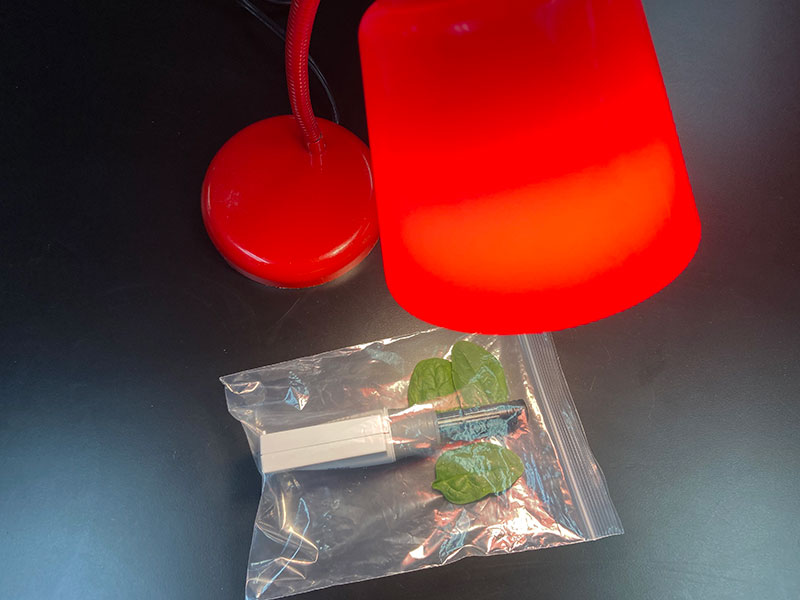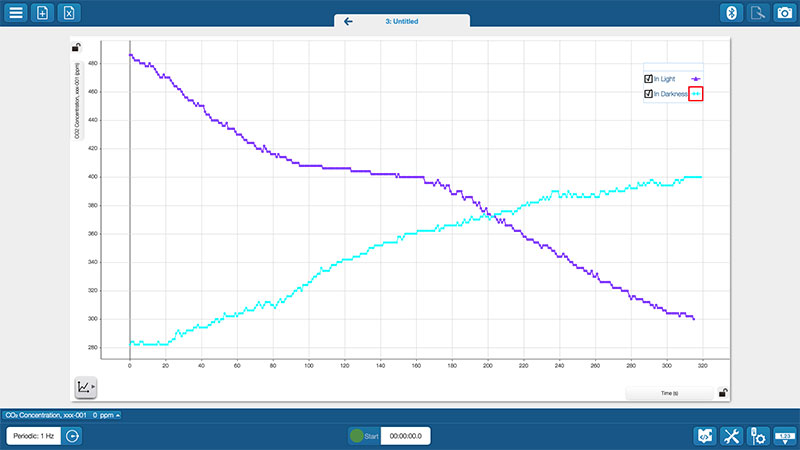A Biology Teacher’s Take on Photosynthesis with the Wireless Carbon Dioxide Sensor
Spinach leaves and the Wireless CO2 Sensor have long been our secret recipe for getting students hands-on and excited about photosynthesis. In the lab, students use the Wireless CO2 Sensor to measure the amount of carbon dioxide absorbed by spinach leaves as they photosynthesize within a closed sample container. We recently learned of a Biology teacher who’s improved the experiment by swapping spinach types and exchanging the sample container for a sealed bag. Here are her tips and tricks for how to maximize your data quality with the Wireless CO2 Sensor.
Tip 1: Swap the sample container for a quart or gallon-sized resealable bag. Not only is it easier to position the spinach leaves around the sensor, but it’s a tighter space, which makes my carbon dioxide data more consistent.

Tip 4: Make sure the leaves aren’t placed upside down or overshadowed by the sensor. If they’re facing shade, then your data will be less consistent. Photosynthesis requires light; don’t let your students forget that mid-experiment…like I did one year.

Tip 5: Use LED or CFL (800-Lumen compact fluorescent) bulbs for best results. The older incandescent bulbs put out too much heat, which can impact the sensor’s readings. I like to make sure students have their lamps or LED flashlights (1,000-Lumen) right above the baggy.
If you're still not convinced, just take a look at these results!

It's always a thrill for us to see teachers discovering new and improved methods for maximizing their PASCO solutions. A big thank you to the creator for allowing us to share her secrets with the PASCO community!

